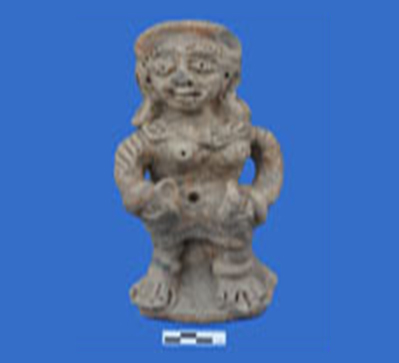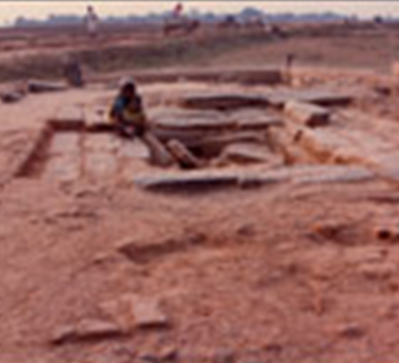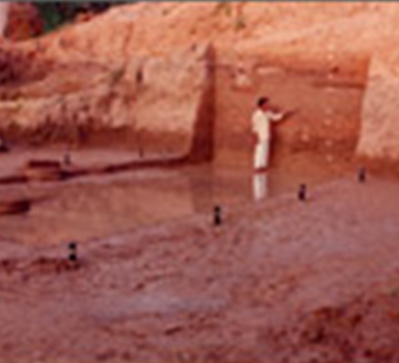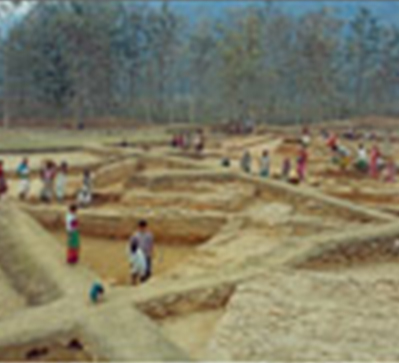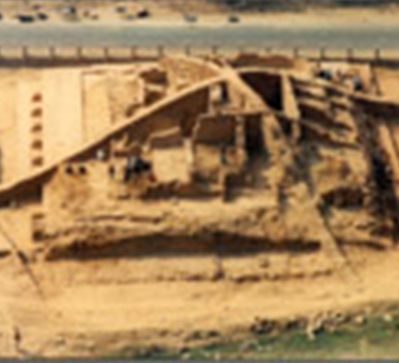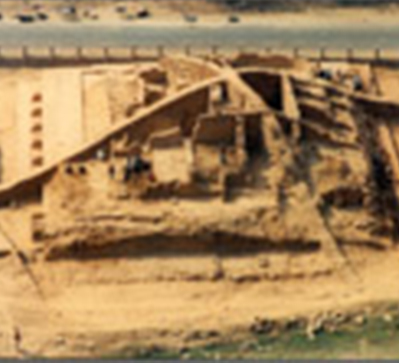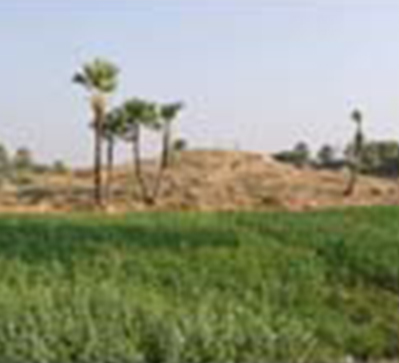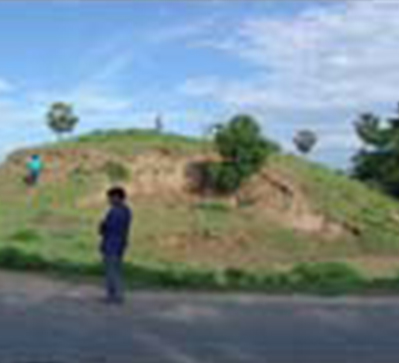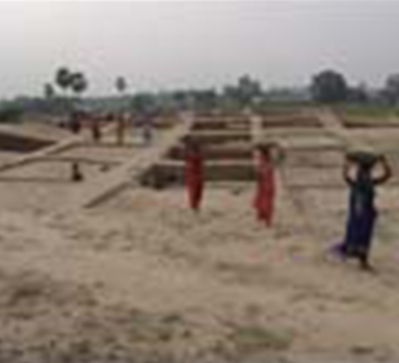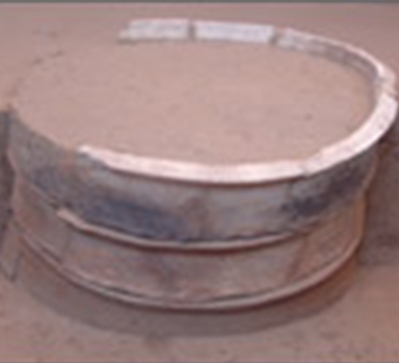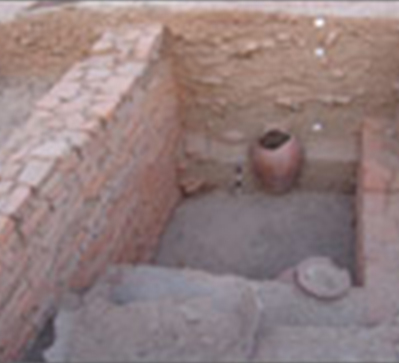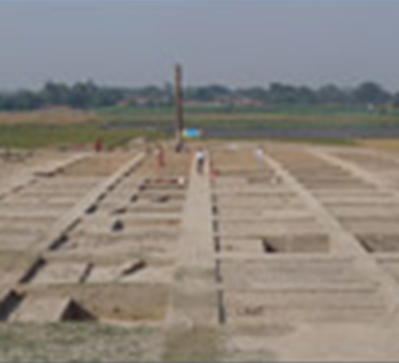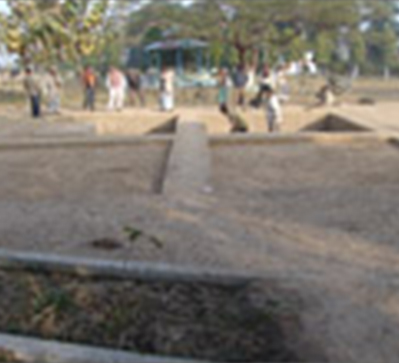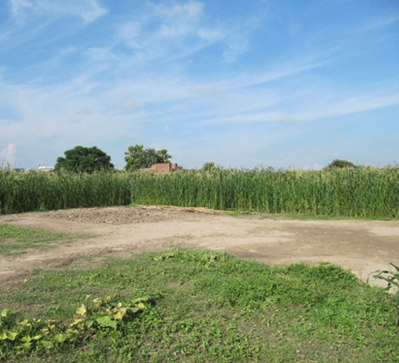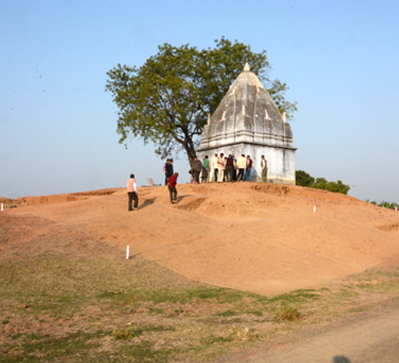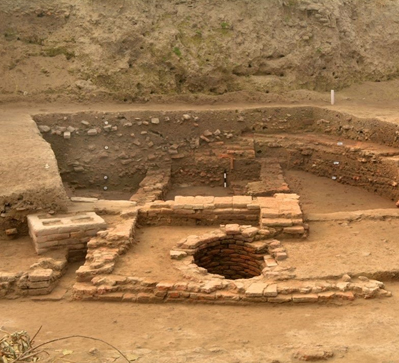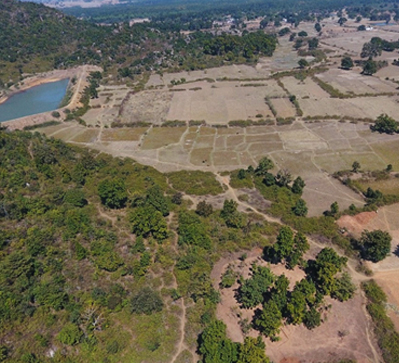Kolhua
| Location | Lat. 260 00’ 51” N ; Long. 870 06’ 32” E |
| District | Muzaffarpur |
| State | Bihar |
| Excavation Years | 1989-1990, 1992-93, 2010-11 |
| Director of Excavations | Lal Chand Singh & Arvin Manjul |
| Assisted by | D.K. Ambastha, Vijay Shankar, S.K.Sinha, D.K.Singh, N.K.Sinha, J.K.Tiwari, Ashish Kumar & Neetesh Saxena. |
Kolhua is situated about 65 kms north-west of Patna in Muzaffarpur district, where Mauryan emperor Ashoka, ‘the great’ had erected monolithic, polished sandstone pillar, consisting of a circular shaft, surmounted by a decorative bell shaped capital, supporting a life-size figure of a lion facing of north. This area under the confederacy of Vajji with its capital at Vaishali, regarded as world’s oldest democracy. Several other archaeological sites are scattered around Kolhua are Raja Bisal ka gadh (ancient Vaishali), Relic stupa, Kharouna Pokhar (Abhishek Puskarni), Chakramdas and Lalpura etc. This place is also associated with one the miracle of Lord Buddha in which the monkey king offered him a bowl filled with honey.
On the basis of pottery, antiquities and structural remains, the following three cultural levels have been marked.
- Period-I : Northern Black Polished water Culture.
- Period-II : Sunga-Kushna (Circa 1st Century B.C to 2nd -3rd Century A.D.).
- Period-III : Gupta and Post-Gupta (4th to 6th-7th Century A.D.)
Excavation has been carried out in and around the Ashokan pillar locally known as Bhim Sen ki lathi, exposing the remains of a stupa, tank, two monasteries and cluster of votive stupas of various shapes and sizes, all of brunt bricks belonging to Gupta period.
The remains of a stupa is found towards north of the Asokan pillar. Early reference describes its height as about 25’4’’ with a diameter of 49.8’’ at the base. The recent excavation around this stupa exposed the remains of Aayakas. The Excavation towards the south of the Asokan pillar exposed the remains of a tank measuring. east-west direction and in north-south direction. Before excavation this area looks like a ditch and A. Cunnigham identified it as Markata-hrida (monkey tank). Though the shape of this tank is almost rectangular, a unique feature was also noticed in this tank Map. This tank has two bathing ghats one in the western side and other is on southern side. Both the ghats are projected outside so that one can not see the people bathing at southern ghat and Vice-Versa.
Towards further west of this tank the remains of a swastika shaped monastery have been found having 12 cells. This monastery has been identified as nunnery (ladies monastery) due to the remains of a toilet which was exposed outside, attached with south-east corner of the monastery. Vaishali was the place where for the first time ladies were admitted into Buddhism and the tradition might have continued during later period also.
Towards southern side of the tank another monastery has been exposed which was identified as Kutagarshala on the basis of Chinese literature.
Other important finding included a potsherd having four letters of Gupta Brahmi characters. The excavation also yielded decorated bricks and finial portion of votive stupas for Gupta level.
No\'s of votive stupas of different shapes and designs decorated with moulded and cut design bricks were also found. These were built over the rammed floor made of brick jelly, lime and surkhi with a slop towards the tank.
Among the antiquities, terracotta sealing depicting Buddha with Buddhist creed, human and animal figurine, bead etc. can be mentioned. The discovery of a crowned monkey is noteworthy which can be described as the representation of that monkey king who offered honey bowl to lord Buddha.
















